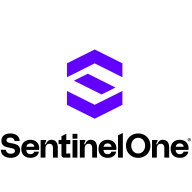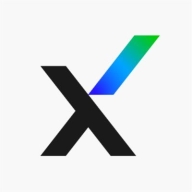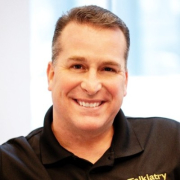

Trellix Endpoint Security Platform and SentinelOne Singularity Complete compete in the advanced endpoint security solutions market. SentinelOne appears to have the upper hand due to its advanced AI-driven threat detection and response capabilities, offering enhanced security efficiency.
Features: Trellix boasts centralized management, seamless tool integration, robust encryption, and data loss prevention. SentinelOne excels with behavioral AI, automated responses, advanced threat detection, and rollback features, plus efficient endpoint activity visibility.
Room for Improvement: Trellix's users often mention high resource consumption and complex configurations. It also lacks certain documentation and advanced features seen in competitors. SentinelOne could improve by allowing more customizable alerts and better third-party integrations, along with enhancing report customization and reducing false positives.
Ease of Deployment and Customer Service: Trellix supports versatile deployment options but may involve longer deployment times due to complexity. Its technical support is highly rated but could respond faster. SentinelOne handles cloud environments efficiently, with praised ease of deployment and comprehensive customer service, fostering quick resolutions and a user-friendly support experience.
Pricing and ROI: Trellix is considered cost-effective with scalable pricing, though some users find it high relative to its customization capabilities. SentinelOne, despite being pricier, is valued for its advanced features and the observed strong return on investment. Users appreciate its comprehensive protection that mitigates initial costs.
SentinelOne Singularity Complete has helped reduce my organization's mean time to detect by fifty percent.
Since then, I have not faced any intrusions, which is one reason I chose SentinelOne over ESET.
We have not faced any attacks since we implemented it.
We have observed tremendous return on investment after implementing Trellix Endpoint Security as it is a more cost-effective solution compared to other products.
Clients appreciate the solution’s customization capabilities and ongoing product improvements.
There are two parts: one is the encryption which is standard and no AI is needed, but the data protection part could benefit from AI to detect new types of data and protect it.
We are using the automated email process for support, and they respond within an hour or two hours sometimes.
A chat service would be beneficial.
The technical support from SentinelOne Singularity Complete is very active and good, with a strong knowledge base available online.
The response time is a notable issue.
I would rate their customer service nine out of ten.
When we implemented Trellix Endpoint Security in their network, multiple malwares were detected.
It's all auto-scale and auto-categorized, configuring automatically.
SentinelOne Singularity Complete is very scalable.
My deployment is relatively small, and SentinelOne Singularity Complete works within those constraints.
I would rate the scalability of the solution as a six out of ten, indicating some challenges due to downtime requirements.
Trellix Endpoint Security is scalable.
This indicates room for improvement in stability when interacting with other solutions.
Initially, there were issues, particularly on the management side, but now the console is much more stable.
Everything is managed automatically, so there is no user interference needed for upgrades.
I would rate its stability as nine out of ten.
I would rate the stability of Trellix Endpoint Security as near perfect, close to ten out of ten.
I think it's stable enough; earlier it had glitches, but now it's stable enough.
The only thing that prevented the attack from succeeding was a free version of Malwarebytes.
Providing a single pane of visibility for the end user would be beneficial.
That seems to play a little havoc and can conflict with manual installs, causing issues where it wants to delete and reinstall the client.
What needs improvement in Trellix Endpoint Security is the reduction of resource consumption by the scanning feature.
Improvements are needed in forensic analytics to detect specific vulnerabilities.
The product does not seem to be cloud-native.
If you want protection, you have to pay the price.
There are other products that are less expensive, but I tell my clients that in security, they cannot cut corners or look for the cheapest solution.
Reputation and quality are important, but especially in today’s economy, price is a significant factor.
The license costs are very reasonable, around 1,000 to 1,200 rupees per year.
Trellix Endpoint Security is cost-effective and provides excellent value for money.
My experience with pricing, setup cost, and licensing is good; compared to other tools, Trellix Endpoint Security Platform provides lower costs.
I have an advanced app providing visibility of all my endpoints, which was not the case before.
SentinelOne has a feature to decommission automatically, which has been fantastic.
There's also automation that gives my team free time, preventing them from having to look for every alert.
Trellix Endpoint Security is a proven, robust, and cost-effective solution that protects the organization from different types of ransomware and attacks.
Including options like Application Control (formerly Solidcore), integrated monitoring, change control, DLP, and advanced threat protection, the solution offers comprehensive security.
The detection capability of Trellix Endpoint Security is higher than traditional antivirus solutions.
| Product | Market Share (%) |
|---|---|
| SentinelOne Singularity Complete | 4.3% |
| Trellix Endpoint Security Platform | 3.7% |
| Other | 92.0% |


| Company Size | Count |
|---|---|
| Small Business | 87 |
| Midsize Enterprise | 44 |
| Large Enterprise | 76 |
| Company Size | Count |
|---|---|
| Small Business | 67 |
| Midsize Enterprise | 36 |
| Large Enterprise | 61 |
SentinelOne Singularity Complete delivers advanced endpoint protection leveraging AI-driven threat detection and behavior analysis for efficient malware and ransomware response. Its standout features enhance security insights and ensure comprehensive endpoint management.
SentinelOne Singularity Complete provides robust ransomware recovery through unique rollback capabilities and seamless integration with various security solutions. Its machine learning enhances endpoint protection, minimizing false positives and automating responses. While praised for real-time threat monitoring, incident management, and asset management, it faces challenges in managing the console, customizing UI, and maintaining policy flexibility. Some users report difficulties with deployment and integration with existing systems, and enhanced reporting, alert management, and documentation are desired. Its appeal extends to deploying across multiple operating systems, offering comprehensive security coverage and facilitating cybersecurity compliance.
What standout features does SentinelOne Singularity Complete offer?Industries implement SentinelOne Singularity Complete for its AI capabilities in advanced endpoint protection, particularly against malware and ransomware. It's utilized across diverse operating systems, aiding in real-time threat monitoring and facilitating compliance. Organizations use it for vulnerability assessments and asset management, ensuring optimal protection in complex IT environments.
Trellix Endpoint Security Platform offers essential features like centralized management, threat prevention, and encryption, facilitating seamless scaling and integration with other systems while prioritizing user security.
This comprehensive platform focuses on endpoint protection, antivirus capabilities, and malware defense. It enhances cybersecurity with data loss prevention, advanced threat detection, and AI-driven features for reliable protection without impacting performance. Central management and advanced reporting streamline integration and ease of use. Flexible policy deployment through the management console and its robust security measures, such as DLP and device control, further increase protection. Challenges include high CPU and memory usage affecting performance, a complex interface, and lengthy deployment. Third-party integration and Windows Hello support need improvement. Additional concerns involve improved threat detection and faster technical support responses.
What are the key features of Trellix Endpoint Security Platform?Trellix Endpoint Security Platform is widely implemented in industries such as banking and government for securing mobile and desktop devices. Its capabilities cover network security, device control, and remote access protection, catering to diverse environments by offering robust cybersecurity management against advanced threats.
We monitor all Endpoint Protection Platform (EPP) reviews to prevent fraudulent reviews and keep review quality high. We do not post reviews by company employees or direct competitors. We validate each review for authenticity via cross-reference with LinkedIn, and personal follow-up with the reviewer when necessary.